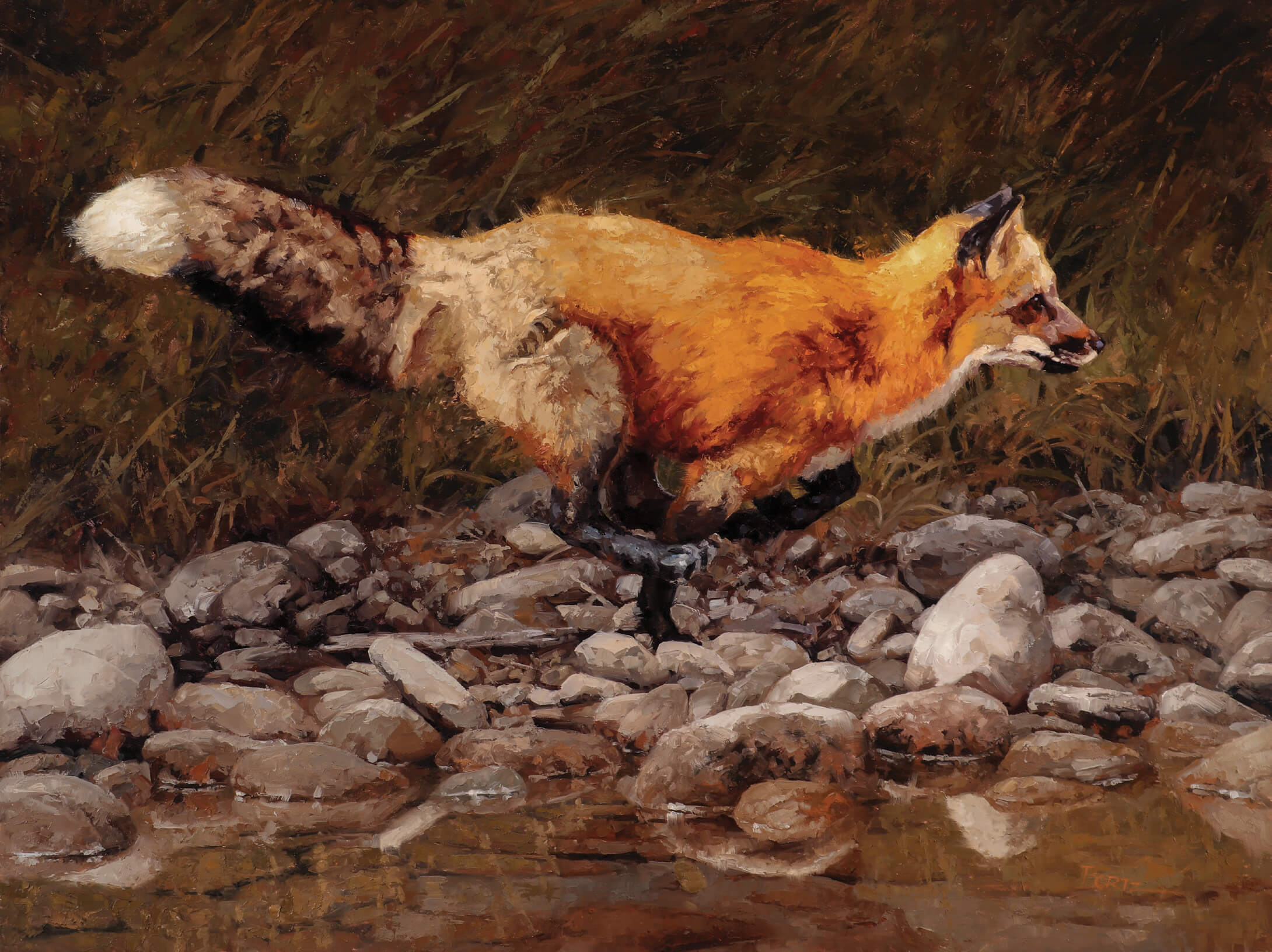
01 Feb Artist of the West: A Risk Worthwhile
Jim Bortz has been many things. He’s worked at a steel mill and on construction sites, repaired cable lines, led expeditions as a fishing guide, tended bar, and apprenticed with a taxidermist. He’s a lifelong sportsman and artist, self-taught in both fields. But these days, painting is his full-time job. Working out of his home in Cody, Wyoming, Bortz fills canvases with stirring oil renderings of his state’s landscapes and wildlife.
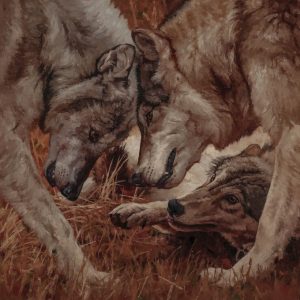
Have You Seen Junior’s Grades | OIL | 24 X 24 INCHES
But, in talking with Bortz, you quickly discover one thing that stands out: He’s comfortable with risk. Early in our interview, Bortz tells me about one of his many encounters with grizzly bears. While fishing, a young female approached him from the opposite bank. “She seemed more curious than anything else,” Bortz explains, quick to defend the bear. But when she began to move closer, he had to act. “I decided to confront her,” he says. “I had my bear spray, nothing else, but she was standing between me and the safety of my truck.” While he admits it might have been better to turn and walk further into the woods and take a roundabout route back to the vehicle, he explains his in-the-moment decision simply: “Maybe I just didn’t feel like hiking 6 miles, but, in that moment, I decided to stand my ground.” The two faced off for a tense moment. Then the bear relented, moving downstream.
It takes a certain type of person to weigh risk against reward and choose the scarier option. Choosing risk takes either a lot of guts or a lot of life learning. Bortz has both. After spending decades doing the practical thing — working steady jobs for regular, reliable paychecks — he jumped into the risky territory of becoming a full-time artist. And it paid off. Over the past decade, his knack for capturing the pure spirit of the Wyoming backcountry has made him a household name among American Western art lovers and collectors alike.
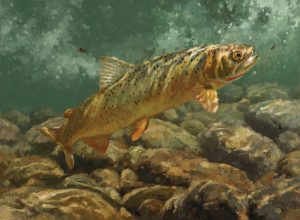
Natural Selection | OIL | 12 X 16 INCHES
Bortz grew up in northwestern Pennsylvania, just south of Lake Eerie. He spent his childhood in the woods, hunting, fishing, and “annoying [his] parents by being late to dinner.” When he wasn’t exploring the forest, he filled notebooks with drawings of the plants and animals he found. While largely self-taught, Bortz benefitted from the lessons of an exceptional high school art teacher. “He taught me how to see, which I found to be more important than learning how to draw.”
Beyond the classroom, he took inspiration from local sources, especially Pennsylvania artist Ned Smith. Working as an illustrator and columnist for the Pennsylvania Game Commission, Smith documented his experiences in the wilderness for publication in the agency’s magazine. “[Smith] did wonderful little drawings that I always admired and was trying to emulate,” says Bortz. “I probably learned more about drawing by studying his work than I did anywhere else.”
After graduating high school, Bortz landed an apprenticeship with Earl C. Martz, an accomplished wildlife artist and taxidermist. Taxidermy is an oft-overlooked art form in its own right, and working alongside a professional afforded Bortz an in-depth understanding of animal musculature and skeletal systems. “Learning how animals move and fit together was foundational,” says Bortz.
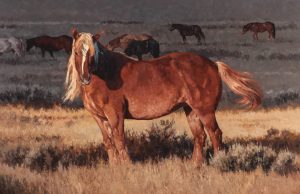
Eclipse | OIL | 30 X 46 INCHES
However, transferring his learning to painting proved far more challenging. Using what limited resources were available in the pre-internet era, Bortz recalls struggling to advance his painting technique. “I gave up on it by the time I was about 25. And man, after that, I don’t think I touched a paintbrush for 15 years.”
Turning away from art left him searching for another life path. “I did everything,” says Bortz. “My first real job was working at a steel mill. I was there for two years. Then I found work with an auto plant, then with a construction crew, and then as a cable TV guy for a while.”
After a time, he became a bartender, which had its perks, including free time during the day and interesting people to talk with at night. But even that felt unsustainable after a time. “I realized I couldn’t be a bartender for the rest of my life,” Bortz says.
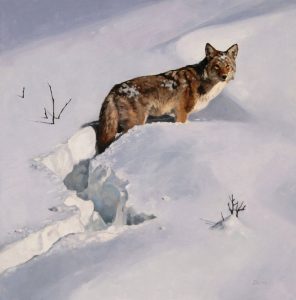
Tough Hunt | OIL | 24 X 24 INCHES
This revelation coincided with his 40th birthday and a fateful visit to a bookstore. “I came across some books on painting that actually seemed useful. Like, where had these been 20 years ago?” So Bortz decided to take another shot at painting, working on his art during the day while continuing to work at the bar. With renewed motivation and learning materials, he finally found his breakthrough. “And it all just snowballed from there.”
Working all those jobs did benefit his art in a way, though some jobs more than others. “The only thing [working at a steel mill] influenced is how hard I worked after. Because I knew I never wanted to do something like that again,” Bortz says. “I worked very hard not to go backward.”
At one point, he flew to Jackson, Wyoming to show his paintings to a gallerist. “It was a hard lesson for me because I was using acrylics at the time,” Bortz says. “Their feedback was: ‘Stop. Nobody is interested in an acrylic painting from an unknown artist. Start using oil.’” Learning to paint with oil was a frustrating setback — akin to “learning a new language,” Bortz says. But he stuck it out. And eventually, the medium clicked.
Looking at Bortz’s work, you could hardly guess his hard-won path to reach this point. He has an impressionist’s hand and clear control of oil paint, creating works that capture experiences in nature. But even more, Bortz paints from his heart. “[Bortz] is the real deal, a real outdoorsman,” says Illume Gallery West owner Jane Lundgren, who represents Bortz in Phillipsburg, Montana. “When he’s watching an animal, he’s not just looking at it — he’s really seeing it, observing an elk’s behavior, marking the twist of a head. It shows up in his art. He’s not just presenting a portrait of his subject, he’s bringing it to life.”
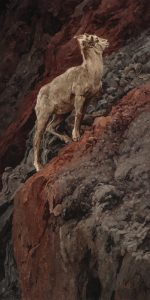
Going Up | OIL | 40 X 20 INCHES
Bortz’s work vividly relates two distinct experiences to the viewer: the animal’s and the artist’s. Take his depiction of a coyote in Tough Hunt: The lone predator stands against a glaring blanket of deep snow, seemingly at a loss. The painting is beautiful, but what makes it remarkable is its translation of a moment. Looking at the work, viewers can feel the crunchy chill of the snow, the stark reflective glare off its crystalline surface, the warmth of the sun from above, and the biting winter air. Viewers feel the coyote’s hunger, see the disturbed snow, and empathize with his disappointment over losing precious prey — but recognize the glint of resolve in his eyes. Tough Hunt is not a scene; it encapsulates a singular moment in the backcountry.
Similar transcendence appears in one of the artist’s favorite paintings, Going Up. It’s a close-up, vertical composition of a bighorn sheep ascending the precarious scree of a mountain incline. The animal emanates strength and agility, standing with undeterred confidence along a dark ledge. Depictions of majestic sheep are commonplace in Western sporting art, but this particular iteration is a stark departure from the norm: this sheep is not a ram. “Most significant wildlife art is of very masculine trophy animals,” says Bortz. A ewe goes against the genre’s tradition, which may not appeal to its fans. A mentor cautioned Bortz against submitting the painting to an ongoing show, Wild West: Wildlife Masters, Past and Present, at the Steamboat Art Museum in Colorado. Doing it would be a risk, he warned Bortz. The artist ignored the advice. “Though rarely depicted, female sheep are so beautiful in their own right,” Lundgren says. “They’re not as massive as the males, but more agile. And [Bortz] captured the feminism of that animal. He took a chance. And it’s good that he did.” Going Up currently appears alongside other works of Western fine art at the Steamboat Art Museum through April 13.
Risk has paid off for Bortz. But, in talking with him, it’s clear the artist doesn’t take his fortune for granted. “He enjoys every breath of his life,” says Lundgren. “And even when he’s not enjoying it, he’s laughing through it. He shares his joy with everyone he meets.”
Halina Loft is a writer and editor based in Bozeman, Montana. Before moving west, she worked as an arts editor for Sotheby’s in New York City.




Scott Quillen
Posted at 12:12h, 11 FebruaryI very much enjoyed reading this article. I have known Jim most of my life. While working as a bartender for my brother we fished together and I even helped him take down tree stands once. Jim is really a 18th century mountain man trapped in this modern society. I have always admired him as a friend an artist and outdoors man. He is so deserving of this recognition. God bless you my friend.